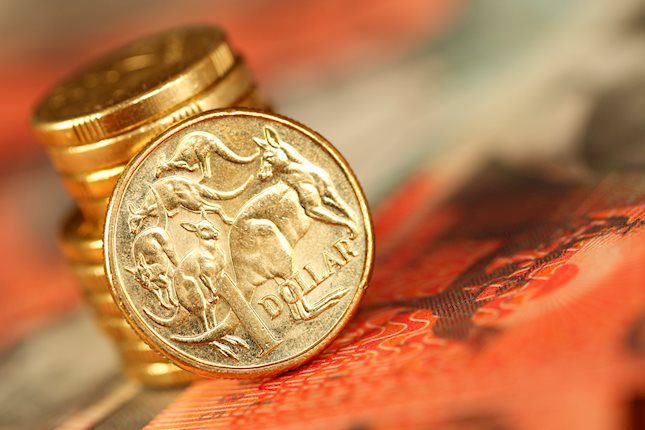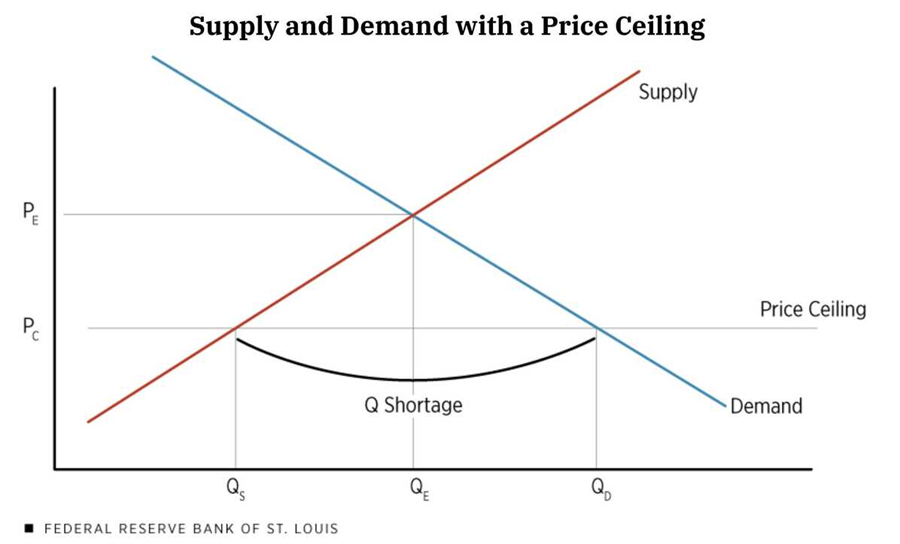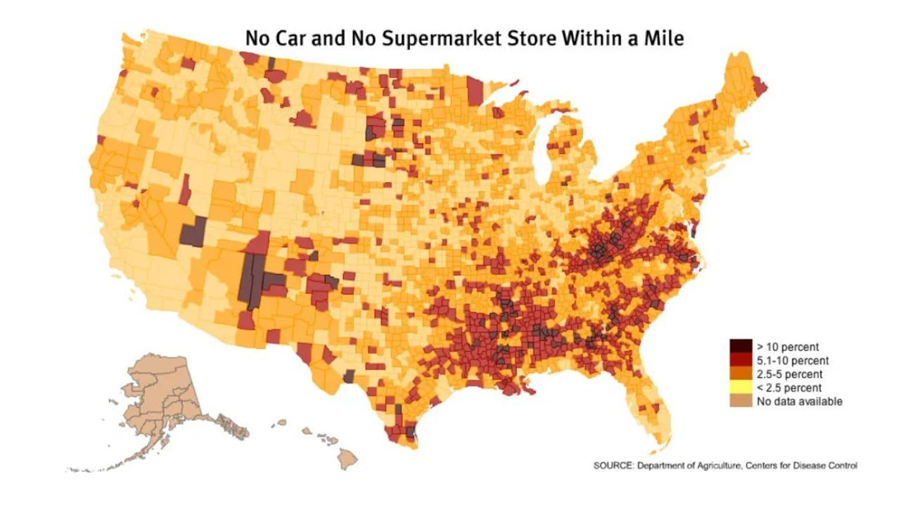From taxes to spending, Kamala is the most left-wing major party candidate since George McGovern -- who proposed a Universal Basic Income in 1972 and went on to win a single state.
But her most hare-brained scheme -- so far -- has been price controls, where she's to the left of McGovern, threatening to punish grocery stores for daring to charge more than their costs.
In fact, grocery stores make 1 to 2 pennies on the dollar. Meaning they have to pass along costs that come straight from the Washington money printer.
That means price controls would, in short, break food.
Price controls always fail
In a recent video I mentioned how price controls have been tried many times, and each time they failed so spectacularly they were repealed. After much pain, suffering, and empty shelves.
When France tried, they got a black market that actually did price gouge. Even Venezuela repealed price controls in 2016 after food shortages and nationwide riots.
But what do price controls look like in reality? For that I go to a great thread by Robert Sterling, a former M&A executive at one of the biggest food producers in America.
Robert walks us through a thirteen step process from grocery price controls to widespread food shortages -- something we haven't seen in this country since the Great Depression, when FDR also imposed price controls.
Stage one: Bankrupt grocers
So, first, the government announces grocery stores can't raise prices even though inflation continues -- courtesy of the Fed and Wall Street. That means their costs keep going up, so those pennies of profit turn into losses.
Like any business that's losing money, they shut down.
Of course, not all grocery stores are created equal -- small ones lack economies of scale, and while rich people buy high-margin vegetables and expensive cuts, the poor buy low-margin packaged foods.
So the small stores and the low-income stores go first.
You get food deserts, as people in urban centers or rural areas have to drive miles -- or take multiple buses -- to find food. And, ironically, you get more concentration, as the little guys drop out.
The survivors increasingly aren't even selling food. They shift shelf-space to things that aren't price-controlled. Clothing, furniture, supplements.
Grocery stores start to look more like a Dollar Store, with a little food and a lot of junk.
As cities clear of food, you'd need police patrolling parking lots and armed escorts on delivery trucks -- perhaps you could even have government-run groceries like Chicago just announced.
Stage two: Bankrupt food producers
The only way to save any grocery stores is to price-control their costs. Meaning food producers like Kraft, Heinz, Tyson, Hormel.
Of course, again, Kraft's costs aren't being controlled -- their ingredients, wages, parts and electricity. So now they're losing money.
Like groceries, they wind down, closing marginal factories and running out equipment then not replacing it.
As food producers downsize or go under, now you start getting actual shortages. And the only solution -- once again -- is price control the next level down. Farmers.
Stage three: Bankrupt farmers
Which brings us to the final stage. Because remember Farmers, too, are now forced to sell at a low price, yet their inputs like fertilizer or tractors are still going up.
They, too, go under.
You are now full Venezuela, with the only alternative to starvation a complete government takeover of the food supply, centrally planned from farmer to grocer.
As Sterling puts it, "The government will struggle to operate one of the most complex industries on the planet. The entire food supply chain starts imploding."
“Imploding” as in starvation.
What’s next
It's very unlikely we'll get to the point of starvation. For the simple reason that at some point the frog boils and the voters -- or rioters -- share their thoughts with policymakers.
That's exactly why price controls fail, from France to Venezuela.
Having said, we managed it before under FDR.
And, unfortunately, if the morons running Kamala's brain trust are dumb enough for price controls, they're dumb enough for a whole lot more.
(Article image is Florence Thompson "Migrant Mother," a migrant pea farmer family by Dorothea Lange in March 1936)
Money Metals Exchange and its staff do not act as personal investment advisors for any specific individual. Nor do we advocate the purchase or sale of any regulated security listed on any exchange for any specific individual. Readers and customers should be aware that, although our track record is excellent, investment markets have inherent risks and there can be no guarantee of future profits. Likewise, our past performance does not assure the same future. You are responsible for your investment decisions, and they should be made in consultation with your own advisors. By purchasing through Money Metals, you understand our company not responsible for any losses caused by your investment decisions, nor do we have any claim to any market gains you may enjoy. This Website is provided “as is,” and Money Metals disclaims all warranties (express or implied) and any and all responsibility or liability for the accuracy, legality, reliability, or availability of any content on the Website.
Recommended Content
Editors’ Picks

AUD/USD consolidates near 19-month peak as traders await US PCE Price Index
AUD/USD oscillates in a range below the 0.6900 mark, as traders opt to move to the sidelines ahead of the US PCE Price Index. In the meantime, the RBA's hawkish stance, the optimism led by additional monetary stimulus from China, the prevalent risk-on mood, and a bearish USD continue to act as a tailwind for the pair.

USD/JPY holds above 145.00 after the Tokyo CPI inflation data
The USD/JPY pair attracts some buyers to near 145.20 on Friday during the early Asian session. The pair gains ground near three-week highs after the Tokyo Consumer Price Index. The attention will shift to the US Personal Consumption Expenditures Price Index for August, which is due later on Friday.

Gold price holds steady near record peak; looks to US PCE data from fresh impetus
Gold price consolidates below the all-time high set on Thursday amid overbought conditions on the daily chart and the risk-on mood, though dovish Fed expectations continue to act as a tailwind. Bulls, meanwhile, prefer to wait for the release of the US PCE Price Index before placing fresh bets.

Ethereum investors show bullish bias amid ETF inflows and positive funding rates, exchange reserves pose risk
Ethereum traded around $2,640 on Thursday, up more than 2% following increased bullish bias among investors, as evidenced by ETH ETF net inflows and an uptrend in funding rates. However, investors may be wary of a potential correction from ETH's rising exchange reserve.

RBA widely expected to keep key interest rate unchanged amid persisting price pressures
The Reserve Bank of Australia is likely to continue bucking the trend adopted by major central banks of the dovish policy pivot, opting to maintain the policy for the seventh consecutive meeting on Tuesday.

Five best Forex brokers in 2024
VERIFIED Choosing the best Forex broker in 2024 requires careful consideration of certain essential factors. With the wide array of options available, it is crucial to find a broker that aligns with your trading style, experience level, and financial goals.

